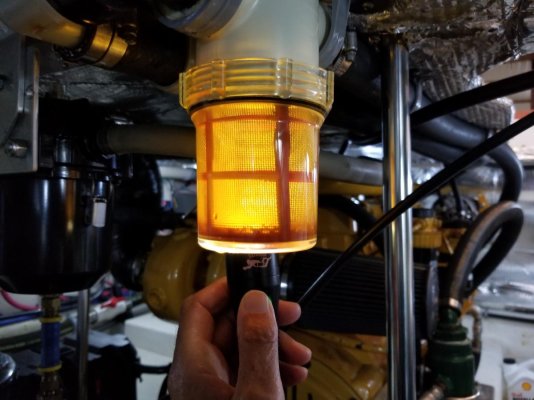CaptGary
Veteran Member
- Joined
- Oct 11, 2019
- Messages
- 44
- Location
- United States
- Vessel Name
- FUNGIRL
- Vessel Make
- Transpacific Eagle 40
I replaced the raw water pump on my Westerbeke generator last Spring.
After about 160 hrs run time, I replaced the impeller as several fins were severely degraded. I used a spare impeller that the previous owner had on board and seemed in good shape. I carefully picked out any loose fins or rubber and made sure I got all the pieces of the old impeller out. As I pay close attention to water flow from my Generator and main Engine, I am certain there was never any point when it ran dry, or with reduced flow. So I assumed with normal wear and tear, I should proactively replace it every 100 - 120 hrs. I ran the Generator another 20 hrs before pulling the boat for the season. After winterizing the boat, I took the impeller out so it wouldn't sit in antifreeze all winter and I noticed that one of the fins was already starting to tear off. I don't know how old the spare impeller was, but it looked new and was pliable when I put it in and am confident I installed it correctly (and didn't damage it when I removed it). Is there a shelf life for rubber impellers?? Any other thoughts or suggestions. How many hours do you get out of an impeller?
After about 160 hrs run time, I replaced the impeller as several fins were severely degraded. I used a spare impeller that the previous owner had on board and seemed in good shape. I carefully picked out any loose fins or rubber and made sure I got all the pieces of the old impeller out. As I pay close attention to water flow from my Generator and main Engine, I am certain there was never any point when it ran dry, or with reduced flow. So I assumed with normal wear and tear, I should proactively replace it every 100 - 120 hrs. I ran the Generator another 20 hrs before pulling the boat for the season. After winterizing the boat, I took the impeller out so it wouldn't sit in antifreeze all winter and I noticed that one of the fins was already starting to tear off. I don't know how old the spare impeller was, but it looked new and was pliable when I put it in and am confident I installed it correctly (and didn't damage it when I removed it). Is there a shelf life for rubber impellers?? Any other thoughts or suggestions. How many hours do you get out of an impeller?


 I also!
I also!